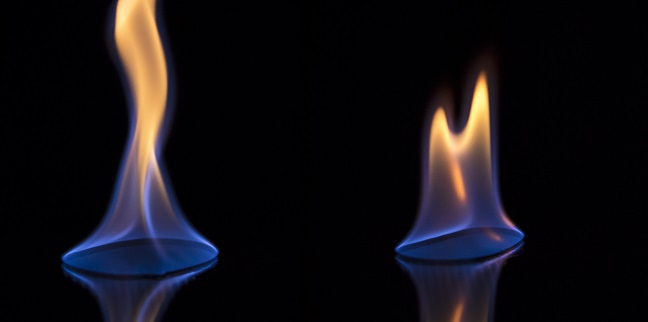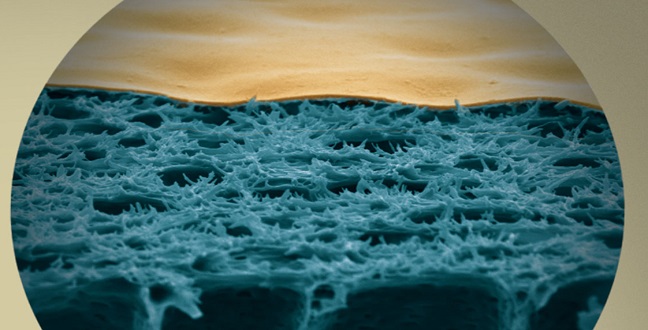
Chemical Engineering
Urban air pollution goes up in smoke
Forest fires’ ashy plumes have an unexpected, sunlight-driven secondary impact on city air quality.
Page 1 of 1

Chemical Engineering
Forest fires’ ashy plumes have an unexpected, sunlight-driven secondary impact on city air quality.

Chemical Engineering
AI model overcomes sparse datasets to accurately predict the properties of experimental sustainable aviation fuels and other high-value target molecules.

Chemical Engineering
Machine learning helps to find the most efficient approach to trap plastic fragments.

Chemical Engineering
Pressure swing adsorption systems can produce high-purity methane and carbon dioxide.

Chemical Engineering
Low-cost oil residues could be converted into valuable carbon fibers.

Chemical Engineering
Insight into how photoexcited biomass-burning organic aerosols boost sulfate formation could help control wildfire-driven air pollution.

Chemical Engineering
The chemical industry could dramatically cut its energy consumption by using machine learning to guide chemical purification protocol selection.

Chemical Engineering
Nanofiltration membranes with bespoke porous architectures enable ultra-selective and energy-efficient separation of complex mixtures.

Chemical Engineering
Highly complex MOF materials made for sustainability applications such as carbon capture can be rationally devised using a new "merged nets" design framework

Chemical Engineering
Understanding hydrogen sulfide decomposition provides a design strategy to improve catalyst activity.

Chemical Engineering
A new way to utilize a greenhouse gas can enhance the efficiency and stability of carbon dioxide hydrogenation.

Chemical Engineering
Bio-inspired membrane materials from fungi mycelium are set to revolutionize separation technologies.

Chemical Engineering
Systems that combine multiple spectroscopy and reactor technologies can bring a more accurate image of catalysts.

Chemical Engineering
Metal-organic frameworks with designer windows show exceptional gas storage capability.

Chemical Engineering
A venerable industrial method for making butadiene bounces back to prominence.

Chemical Engineering
Machine learning could fast-track the formulation of tailor-made mixtures, including “greener” fuels.

Chemical Engineering
Heat treatment shrinks polymer’s pores to enhance solvent filtration.

Chemical Engineering
Systematic study resolves a debate on the best combination of metals to catalytically clean NOx from vehicle emissions.

Chemical Engineering
Membranes made from date seed biomass could provide a greener and more cost-effective alternative for industrial separation.

Chemical Engineering
Waste materials are used to create an environmentally friendly filtration system for industrial applications.

Chemical Engineering
An energy efficient membrane technology could lead to a low-cost and environmentally sustainable separation technique.

Chemical Engineering
The conversion of captured CO2 into fuels and other valuable hydrocarbons could enable a sustainable nonfossil-fuel-based economy.

Chemical Engineering
Polymer membranes with precisely controlled, uniform and very small pore structure could bring ion-sieving capacity to many applications.

Chemical Engineering
Perfecting the dimensions of chemical separation membranes is a step toward a sustainable chemical industry.

Chemical Engineering
The system offers an economical way to source essential battery material.

Chemical Engineering
The tightly defined ratios of metals in metallic organic frameworks makes them ideal starting materials for novel catalyst creation.

Chemical Engineering
Catalyst nanoparticles trap an unprecedented range of wavelengths of light to convert carbon dioxide into methane.

Chemical Engineering
Volatile alkanes can rapidly acquire oxygen atoms in a free radical chain reaction, a process significant for fuel combustion and air pollution.

Chemical Engineering
Nanostructure-templated electrochemical polymerization enhances speed and selectivity in organic membrane-based processes.

Chemical Engineering
Chemistry computer algorithm does more with less experimental data to reveal the optimal way to make green materials.

Chemical Engineering
Looking closely at the chemical process that transforms methane into useful products could help unveil more efficient ways to use natural gas.

Chemical Engineering
Machine learning models can rapidly and accurately estimate key chemical parameters related to molecular reactivity.

Chemical Engineering
Modified metal-organic frameworks that can behave as porous liquids offer new possibilities for gas separation technologies.

Chemical Engineering
Highly modular metal-organic framework-based materials show great potential for photocatalytic hydrogen production.

Chemical Engineering
A more sensitive technique shows a cigarette alternative seems to emit more chemicals than manufacturer testing had found.

Chemical Engineering
Self-assembled channels in a polymer membrane could greatly enhance extraction of water from gases.

Chemical Engineering
Covalent organic crystal networks generate high-selectivity and high-flux membranes for organic solvent filtration.
Chemical Engineering
A membrane made of porous carbon-fiber structures grown on a porous ceramic substrate is more efficient than similar existing membranes at filtering seawater.

Chemical Engineering
A new conceptual model for describing a fuel’s composition can accelerate and simplify combustion simulations.

Chemical Engineering
The transition to renewables will take decades, so we must rush to clean up conventional fuel combustion, says Mani Sarathy.

Chemical Engineering
Synchrotron study reveals oxygen’s influence on the chemistry that surrounds us.

Chemical Engineering
Cone-shaped sugar structures can be connected together to form selectively porous nanofiltration membranes.

Chemical Engineering
Car manufacturers could clean up vehicle exhausts using a new model of gasoline combustion developed using experimental data.

Chemical Engineering
Stable and recyclable materials synthesized using intrinsically porous polymers selectively retain CO2 from exhaust emissions and natural gas.

Chemical Engineering
A better understanding of fuel ignition processes in internal combustion engines could help break new barriers in fuel efficiency and emission reductions.

Chemical Engineering
Bringing three powerful chemical groups together offers new possibilities in drug development.

Chemical Engineering
Graphene oxide combined with a polymer membrane creates a barrier that is selectively permeable to carbon dioxide.

Chemical Engineering
The right blend of polymers enables rapid and molecule-selective filtering of tiny particles from water.

Chemical Engineering
Chemical reaction modeling and combustion experiments reveal how 2-methylbutanol would behave in advanced engines.

Chemical Engineering
A material for filtration that is easy and cheap to produce could aid water treatment, solvent filtration and membrane-catalysis.

Chemical Engineering
Nanoparticles with pores that expand and shrink could prove valuable for biochemical research and drug delivery applications.